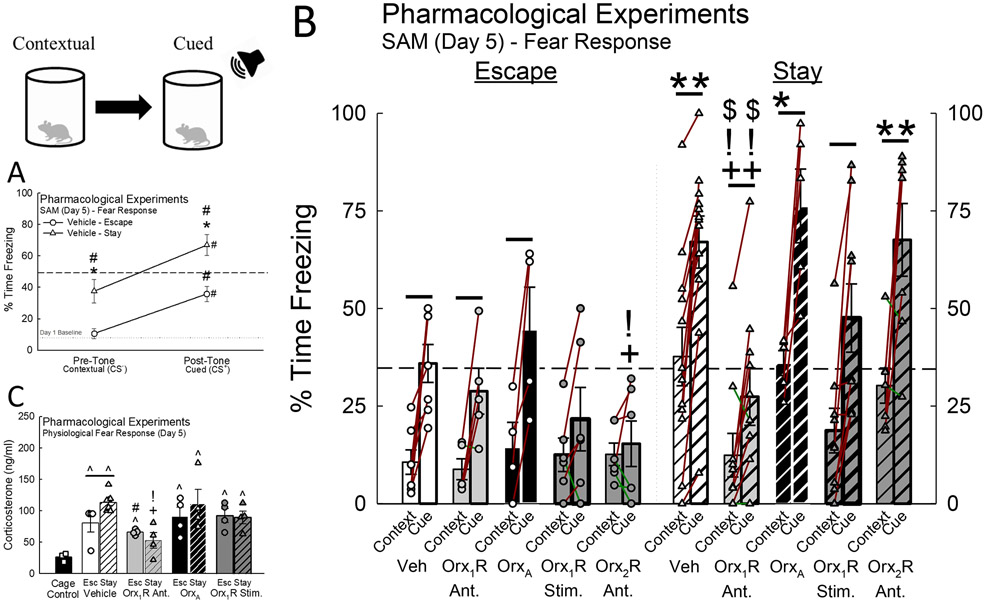Figure 5.
Inhibition of Orx1R in the BLA reduces contextual/cued fear responses and stress hormone concentrations. A) Although both Escape and Stay phenotypes learn to associate a cue (tone, CS+) with social aggression (Phenotype Effect: F1,17 = 7.6, p < 0.013; CS Effect: F1,17 = 47.7, p < 0.001; Escape CS− vs CS+, t6 = 3.9, #p < 0.008; Stay CS− vs CS+, t11 = 5.7, #p < 0.001), Stay mice exhibit heightened freezing behavior to both context (CS−; t17 = 2.8, *p < 0.011) and tone (CS+; t17 = 2.3, *p ≤ 0.033). Baseline measurements of freezing are represented by a dotted line. B) Antagonism of intra-BLA Orx1R reduces conditioned fear responses in Stay animals while Orx2R inhibition diminishes fear freezing in Escape mice (N = 71; * represents significant differences compared to Escape mice in the same treatment group; + signifies significance compared to Vehicle-treated animals in the same phenotype group; ! identifies significant differences compared to OrxA-treated mice; $ denotes significant differences compared to Orx2R antagonist-treated animals). See Supplemental Information Figure S7 for specific a priori hypotheses comparisons. C) Mice exposed to social stress produce elevated levels of stress hormone (N = 39, F2,12 = 24.3, p < 0.001; Cage Control vs Vehicle Escape, t5 = 3.1, ^p ≤ 0.028; Cage Control vs Vehicle Stay, t9 = 9.9, ^p < 0.001); however, Stay animals have the highest concentration (Vehicle Escape vs Stay, t10 = 2.6, p ≤ 0.025). Inhibition of intra-BLA Orx1R reduces corticosterone levels in Stay mice (Vehicle Stay vs Orx1R Ant. Stay, t10 = 5.1, +p < 0.001; Orx1R Ant. Stay vs OrxA Stay, t6 = 3.3, !p ≤ 0.002).

